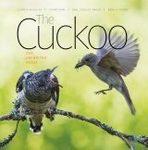![Atlas of Feathers for Western Palearctic Birds, Volume 1: Introduction Atlas of Feathers for Western Palearctic Birds, Volume 1: Introduction]()
Click to have a closer look
About this book
Customer reviews
Related titles
About this book
The Atlas of Feathers for Western Palearctic Birds is a collective project of the Feather Research Group, founded in 1972 by Wilfried Hansen. This monumental work, depicting the feathers of nearly all bird species recorded in the Western Palearctic, has been in the making for over 20 years. More than 150,000 feathers have been scanned for this encyclopedia, both in private feather collections and in many natural history museums. These scans, digitally composed into beautiful pterylographies, reveal hidden details of all major plumages. The Atlas of Feathers for Western Palearctic Birds will consist of a 2-volume concise edition and a 10-volume full edition.
The Introductory Volume to the Atlas of Feathers for Western Palearctic Birds opens the 10-volume full edition. It looks beyond the geographic limits of the Western Palearctic and gives a global overview of feather characteristics. One of the most interesting topics of ornithology is the origin and evolution of feather emarginations. According to current scientific knowledge, feather emarginations were not present yet in Mesozoic birds.
This volume features the first-ever survey and quantification of feather emarginations (recesses or notches in the margins) in all living bird species of the world as well as many recently extinct species. The most extensive scientific study on emarginations to date was published in the Journal of Morphology and quantified the emarginations of 135 bird species. In spite of scientific peer review, three out of these 135 species were classified wrongly, either as being emarginated when they were not, or vice versa. This showed the need for a clear definition of what constitutes an emargination, and the need for more extensive peer review. The Feather Research Group invites the public at large to participate in this peer review as citizen scientists. The links to the scans of feathers and photographs of live birds that were used for evaluation will be made available on a separate website, where anyone will be able to help the editorial team verify and correct the results.
One of the surprising results is the amount of phenotypic plasticity that is found in many species regarding the number and extent of emarginations. A more detailed search by more people is likely to reveal a much greater extent of phenotypic plasticity in many more species. Another surprising finding is the existence of emarginations in adult males of certain hummingbird species. Hummingbirds, just as the related family of Swifts, do not normally have emarginations, as they make no aerodynamic sense for the way they fly. Possibly their presence in males indicates ornamental or acoustic roles during courtship display rather than any aerodynamic purpose, though this hypothesis would require further research on the behaviour of these species.
The family summaries for all 244 bird families of the world give further details of the avian flight apparatus, including the number of primaries, secondaries and rectrices, including unusual variations, the presence or absence of remicle and carpal remex, the prevalence of eutaxy and diastataxy, the position of the longest primary, the relative length of the outermost primary, as well as the ranges of variability in the longest alula feather, longest secondary and longest tail feather, all in per cent of the longest primary. The family summaries are followed by short summaries on genus level and then present the currently available data for each species.
Customer Reviews




































